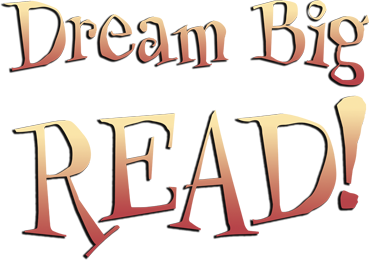 But there are some things you can do to ensure that your youngest family members reap all the book benefits and don't fall into those percentages. Kurt Wootton, the co-author of Reason to Read, shares some ideas with the Huffington Post:
But there are some things you can do to ensure that your youngest family members reap all the book benefits and don't fall into those percentages. Kurt Wootton, the co-author of Reason to Read, shares some ideas with the Huffington Post:
1. Build. Many kids do love to sit and listen to stories, but all kids get restless and need to do things. Maria Montessori wrote, "The hands are the instrument of the human intelligence." Many books provide inspiration for building things in the real world. In the book Roxaboxen, a girl named Marian transforms a hill across from her house into a city using only natural objects and the help of her friends. Sticks and rocks are all that's needed to start building our own city with our kids. Books like If I Built a House and The Big Orange Splot allow us to dream of our own special house that matches our personalities. With pencil and paper, cardboard, or a set of blocks, kids can go about dreaming up their own homes.
2. Record. Many of us face the challenge of having parts of our family live in different places. We live in Mexico and Sandra's grandparents live in the United States. My mother records herself reading and singing along to various books and sends them to me. I create an iTunes playlist of my mother's readings and stack the corresponding books on the coffee table for Sandra. Sandra always insists on completing ALL the books we have recorded at one sitting. She loves getting these little gifts from her grandmother and best of all they can arrive to Mexico instantly over email.
3. Search. Goodnight Moon is a timeless book for a reason: kids love to look for things. Many children's books are filled with objects, people, and animals in rich landscapes (see for instance books illustrated by Graeme Base and Jimmy Liao). We often stop the story and I ask Sandra, "How many birds are in this picture?" or "Can you find the monster?" Such concrete tasks help her build a relationship to the book, and, on her own time, she opens the books and looks for the objects herself -- an early stage in her journey towards becoming an independent reader.
4. Perform. I often lead workshops for teachers on the topic of how they can have their students perform the books they teach in the classroom. One of my favorite books to do this with is Where the Wild Things Are by Maurice Sendak. With Sandra I'll do the same thing. We swing through imaginary trees with the Wild Things. We dance the wild rumpus. She climbs on my back as we make the parade. Books and songs that lend themselves to physical movement include: Roll Over: A Counting Song, Baby Cakes, and The Tickle Monster.
5. Improvise. This is actually an idea that came from my daughter. One day she had all of her toy musical instruments laid out on the coffee table. She handed me a book and asked me to read it. She then ran over to the other side of the table and picked up the drum sticks. As I read, she accompanied my reading with various instruments thereby creating a soundtrack for the story.
6. Organize. Cleaning up may not be the most imaginative interaction with stories, but it certainly is an important one. At the end of the day, when all the reading, playing, and making is done, we tuck the books away in a series of plastic boxes to sleep.
And don't forget, if a young person you know doesn't seem to like reading, it could be the symptom of an actual literacy issue, such as dyslexia, rather than an actual lack of desire. It could also mean, however, that he or she just hasn't found the right book to spark interest yet. So get some testing done and keep trying. Reading is not only awesome but it's important!
